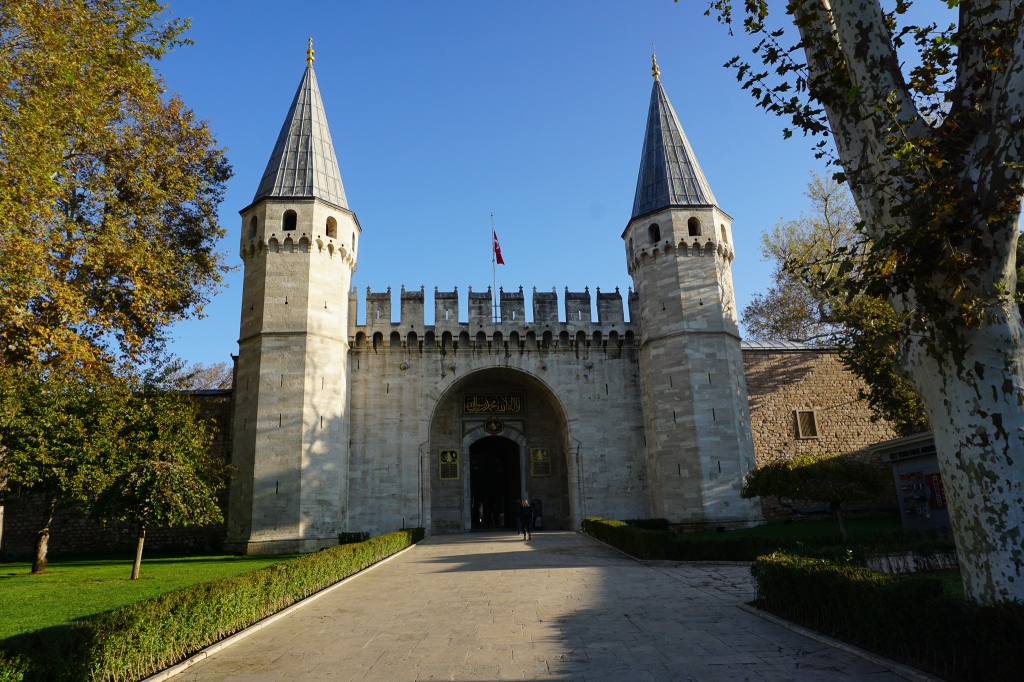
If there is something you should not skip in your visit to Istanbul, is the Topkapi Palace complex. This was the residence of lustful sultans, courtiers, concubines and eunuchs – all living and working within the complex between the 15th and 19th centuries.
Mehmet the Conqueror started to build the complex in 1453 after his conquest of Istanbul (then Constantinople). It continued to be the home of sultans until they decided to take a taste for European-style palaces built by the shores of the Bosphorus in the 19th century – I visited one of those as well – for a next post! But this is precisely what makes Topkapi so special – real Ottoman architecture you can’t really find anywhere else in Europe. A palace with a very different structure from what you get when visiting European royal houses.
But before entering the complex, you will stop to admire the beautiful fountain by its gate. In rococo style, it was ordered by Sultan Ahmet III, in 1728 – the sultan known for having an obsession with tulips.
This fountain was located on the way to my hotel so every day I was staying in Istanbul it was the first landmark I’d see in the morning and then, coming back in the evening, the last one. Day and night, always beautiful and kept pristine.
When you visit the Topkapi complex make sure you include the visit to the Harem – a different ticket and price. This was likely my favourite part and when I started to really learn about what the Harem actually was. I had read a book before this trip that helped me understand a little bit about the history of this place. The book is by Turkish author Elif Shafak, and it’s called The Architects Apprentice. It takes place during the time of Sultan Süleyman the Magnificent, and whilst the protagonist is a fictional character who is both an Elephant caretaker for the palace and also an apprentice of architect Mimar Sinar, it shone a light on how a sultanate would work.

The book starts with shouting coming from the palace. Multiple bodies lying dead, boys of different ages, but still boys. These were the sons of the Sultan, murdered by their own brother to clear any threat to his succession. These were the way things worked in the Ottoman Empire – fratricide was common practice, until Sultan Ahmed I ended it by not killing his brothers and introducing seniority succession to the Ottoman dynasty, in1603. Ruthlessness seems like the right word to describe the practice. Yet hard to believe when you walk through the beautiful courtyards that those walls bore witness to such cruel acts. Even so, when Sultan Ahmed I ended fraticide, it’s good to know that his brothers were not free – they were to stay inside the palace, particularly in the Kafes, a reserved area in the harem. This would ensure they were under control and wouldn’t cause an uprising against Sultan.
But before going to the Harem, I explored the different courtyards of the palace. Topkapı is a series of pavilions, kitchens, barracks, audience chambers, kiosks and sleeping quarters built around a central enclosure – very much different from European Palaces. I was mostly admiring the architecture and the decorative elements that are so uncommon in Western Europe. Wanting to understand Arabic to be able to read it, yet knowing that in every single corner of the palace there was a presence of religion – even if so often sultanates are seen as sinful, cruel, and well…as I mentioned, quite ruthless. But that is religion and power. Everywhere in the world.
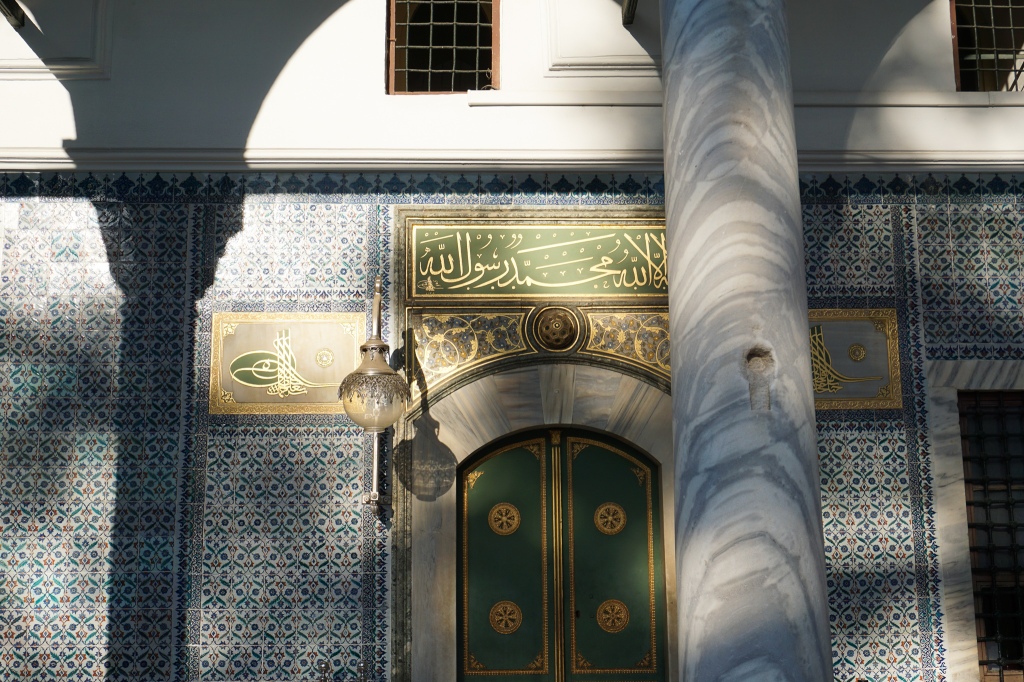

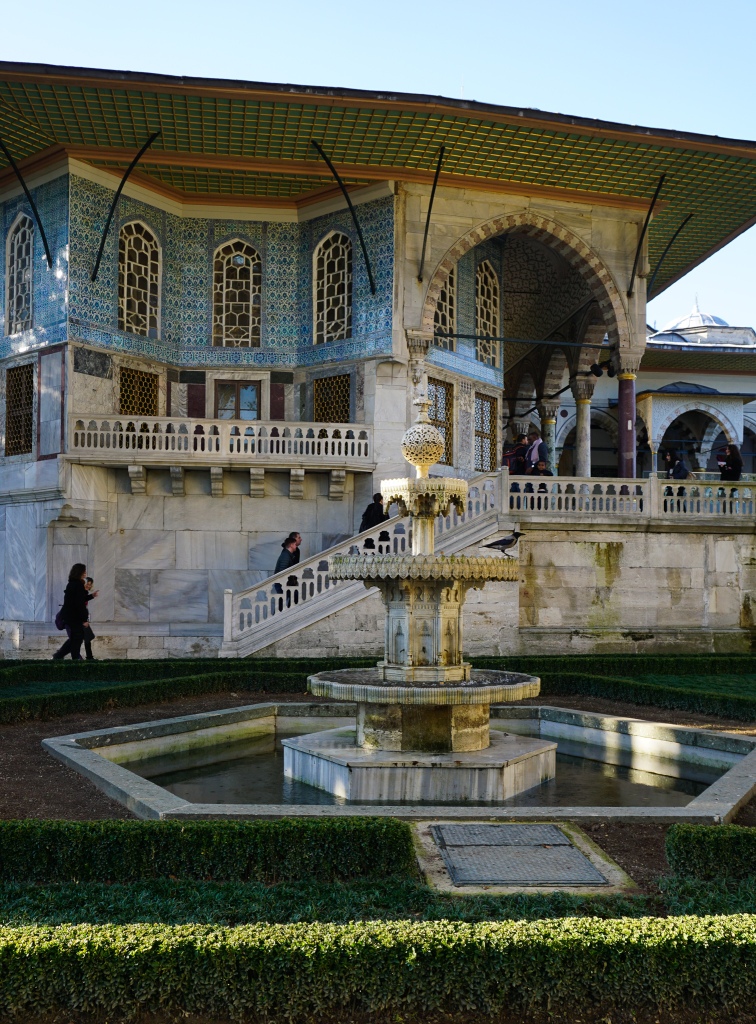
I had been wrong about the concept of a Harem, as likely a lot of us in the west are. I have only imagined a group of beautiful women, living together with the only purpose of satisfying the Sultan’s sexual desire. I basically imagined a harem to be simply a sort of brothel exclusive to the sultan. In fact, the word Harem does refer to concubines, but also to the Sultan’s whole family, including himself. The Harem actually originates from the Arabic word ḥarīm, meaning “a sacred inviolable place”. It refers to the private, domestic space of the Muslim family. The Harem housed the Sultan’s mother and wife, his concubines, his unmarried daughters, female servants and male children. It was guarded by eunuchs, the only men aside from the sultan and his sons allowed inside – since part or the total of their genitals would have been removed, it was unlikely they would develop intimate or romantic relationships with the women inside.
We need to remember that in most Muslim countries, women are to be kept afar from the outside eye – a man that is not able to control their women is seen as weak, his pride hurt. Ensuring their women wouldn’t be desired or looked at by any other men is likely one of the reason why the Harem was created int eh first place.



Inside the Harem, you find luxurious, rich and more than comfortable rooms. But I couldn’t stop feeling queasy about the whole thing, as the feminist I am. Of course, if you were choosing to be a concubine, nothing against it. It could be a great opportunity to gain power if you played the game well – in fact, Hurrem Sultan, Sultan Suleiman’s wife, was a concubine who had been captured from Ruthenia (now Ukraine) and sold as a slave. She entered as a concubine in the harem, and rose through the ranks, becoming the Sultan’s favourite. She ended up being one of the most powerful and influential women in Ottoman history. Yet, she was captured and sold as a slave. As most concubines were. And also the eunuchs. But she managed to cleverly make her way to the top, even after what must have been a very traumatic experience.
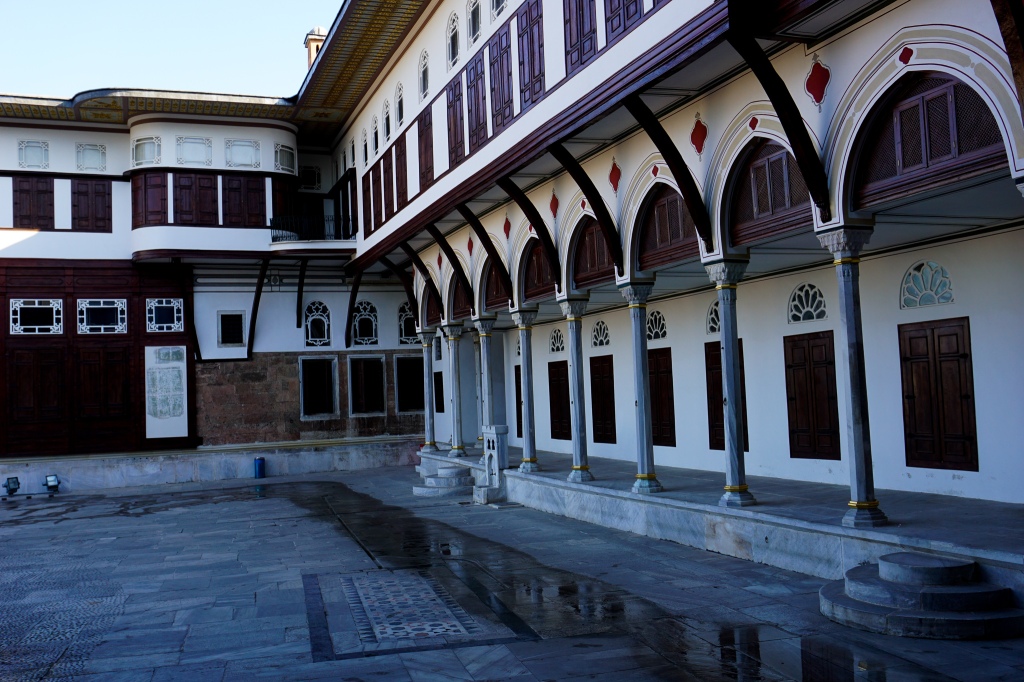
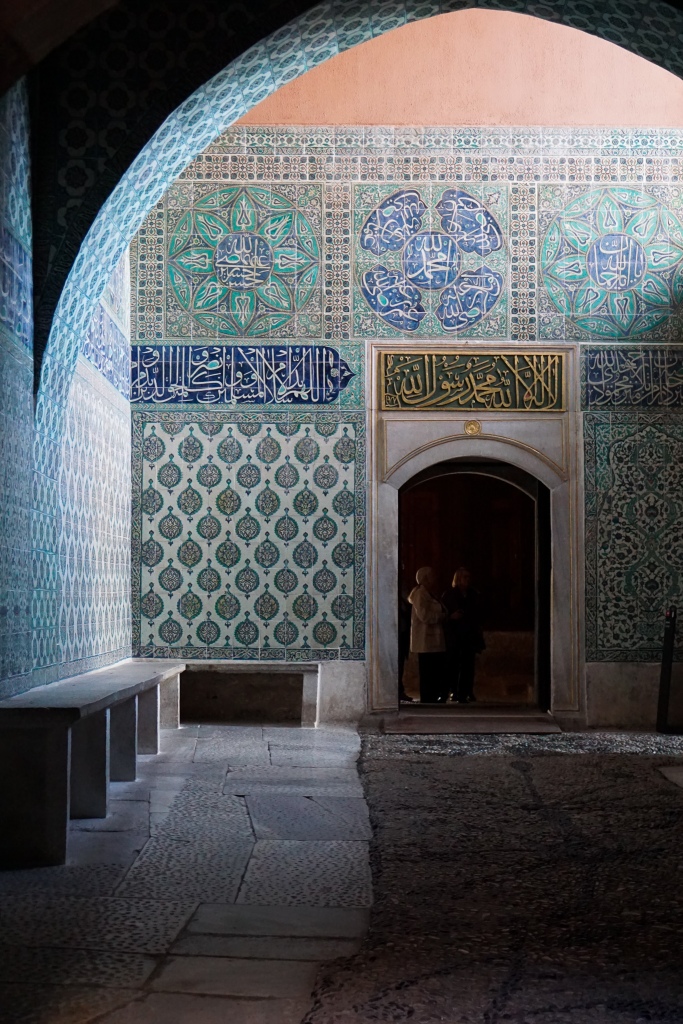


While slaves, once brought to the Harem, girls were taught Turkish culture and language, as well as the arts of make-up, dress, comportment, music, reading, writing, embroidery and dancing – all the education needed to compete in what became some sort of career – as they started as ladies-in-waiting to the Sultan’s concubines and children, and then if particularly talented and attractive, they would be bedding the Sultan and carrying his children. In most cases, any women in the harem would be very well educated, and well-read – which is why some had such an influential role in Ottoman History, as often they could become counsellors of the Sultan himself – such was indeed the case with Hurrem Sultan.
However, let’s remember. These women were still slaves. They were captured and taken away from their countries, and their families. Even if trapped in a golden cage, even if given food, education, and a warm bed – they were not allowed to leave – this was indeed a golden cage, but still, a cage. I believe rising to the ranks of being a Sultan’s concubine and ensuring they were pleasing him ended up being a strategy of survival.
I personally wished there were more records of what life was really like inside the Harem. It shouldn’t have been easy for sure – potentially not being able to trust anyone, fighting for power and having the constant fear of having your sons killed in the fight for succession. And what happened to those concubines who did not stay in the favour of the sultan for long? Of ever of his mother? Did they just die in the Harem? Could they at any point simply leave?
I guess not. There was power to be held in the Harem. But in limited capacity within those walls. A power that could be easily lost depending on the moods of the sultan. And while I was visiting the Harem, I kept having this feeling that I was indeed in a prison. Not a lot of windows and too many walls. I was claustrophobic. I was trying to imagine what would it be like in the golden era of the harem of the empire – it is reported that some sultans could have had up to 300 concubines! So imagine that, plus the ladies in waiting, the eunuchs, and the children. Seemed crowded and busy!

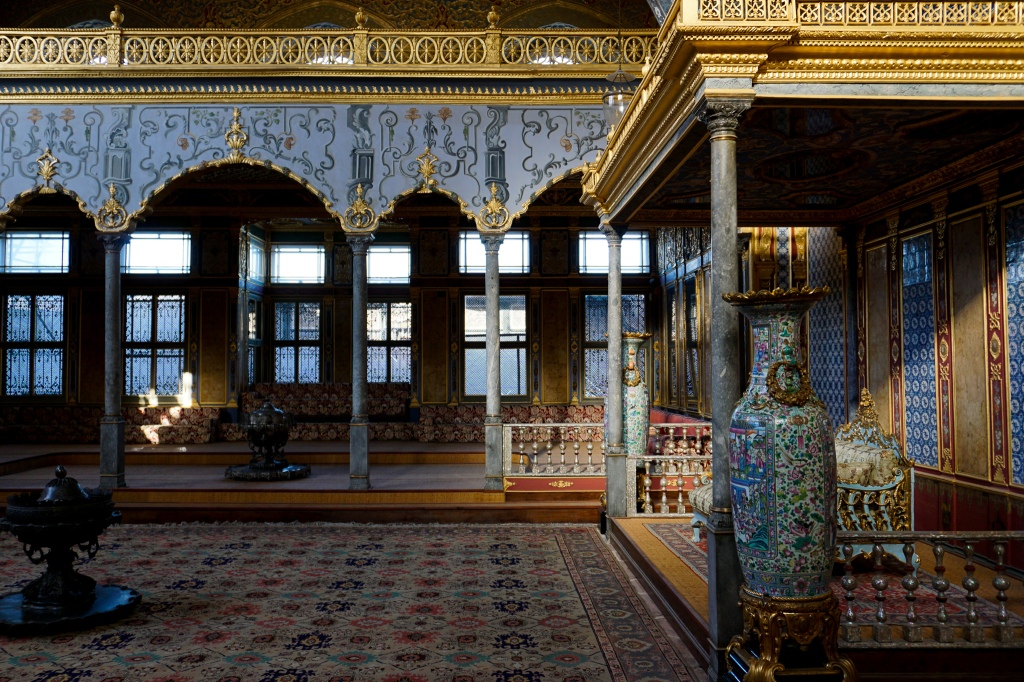
And while fratricide was ended eventually, let’s remember, death was exchanged for imprisonment. Again, in a golden cage, but still, again, a cage. One of the most horrific stories is the result of madness caused by such enclosure. Sultan Ibrahim was mentally unstable – he had been spared being killed as he already had very serious mental problems as a child, therefore not seen as a threat – so he was kept imprisoned in the kafes, the princes’ glorified jail. For someone already with his share of health problems, being imprisoned did not help. He became worse with time and, when his brother died, he was next to succession. I suppose nobody imagined this would happen – the sultan was only 27 years old when he passed of liver cirrhosis in 1640.

Ibrahim should have never been given this power. He was constantly ill, and some today say that the root cause of his constant ailments was precisely the way he was brought up as a child. Yet his constant suffering didn’t stop him from being particularly cruel – it seems it may have made him worse than any other Sultan. Despite his illnesses, he had an unsatiable lust for women. He kept a large number of concubines in his harem. But mostly, he was a predator, a rapist. Even when the Grand Mufti (State Chief) denied him his daughter’s hand in marriage, Ibrahim ordered her to be brought to the harem, proceeding to rape her for days, returning her to his father afterwards. Reading this story made me sick. But not as much as what comes next – he seemed to have a particular taste for big women. His desire was fulfilled when Sivekar Sultan, an Armenia woman, weighing 150 kg, was found and brought to him. She rose to the top of the harem, becoming his favourite – and she herself likely let her power rise to her head. At some point, she told the sultan that one of his concubines had been compromised by an outsider – paranoid, he started a line of questioning that led to nowhere. Furious, Ibrahim ordered the killing and dumping of his entire harem into the Bosphorus. 280 women drowned as a result of an unproven accusation of betrayal.
My conclusion – life was difficult for both the women and the princes kept in the harem. But women, always the women get the worst of it. Perhaps these stories cast a shadow when you are admiring the beauty of Topkapi. Yet, to me, it makes it all even more interesting – how we are able able to create such beauty, whilst also being able to create the most unthinkable acts of cruelty.
Nic




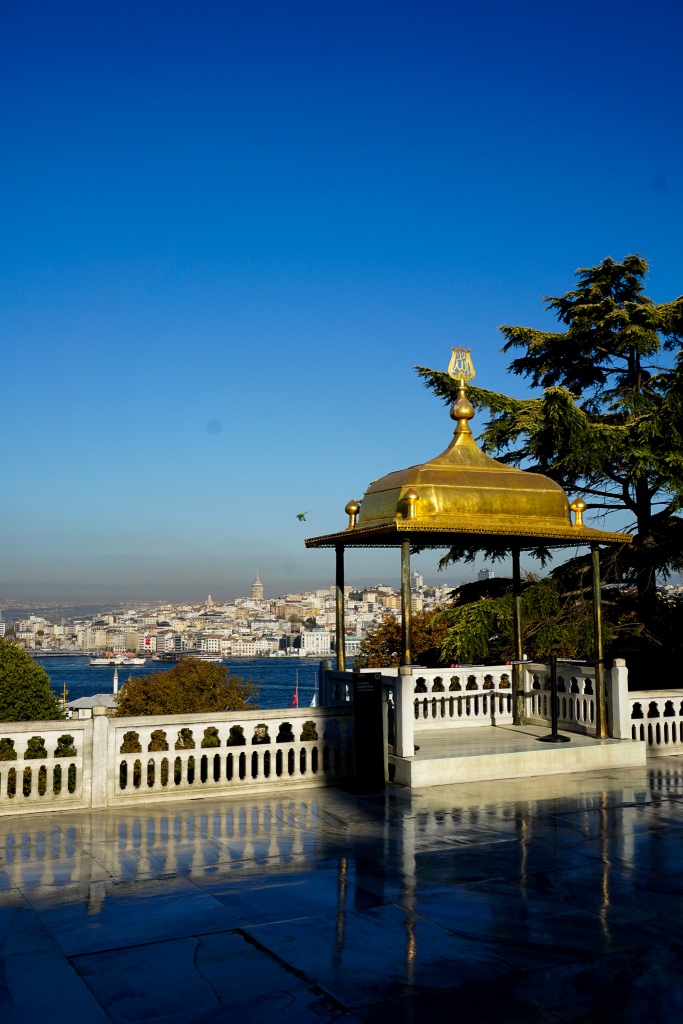

This palace is gorgeous! I love the photos of the sitting room. Really extravagant and the light condition is just perfect.
LikeLiked by 1 person
Thank you Len!
LikeLike